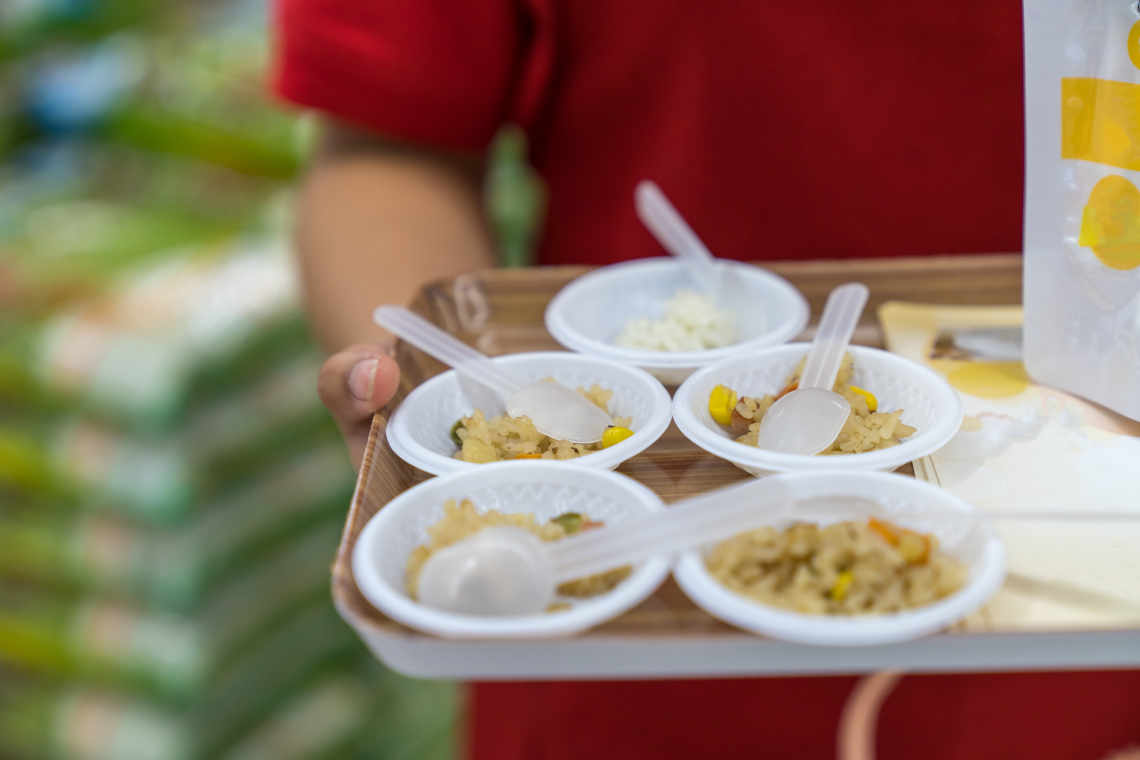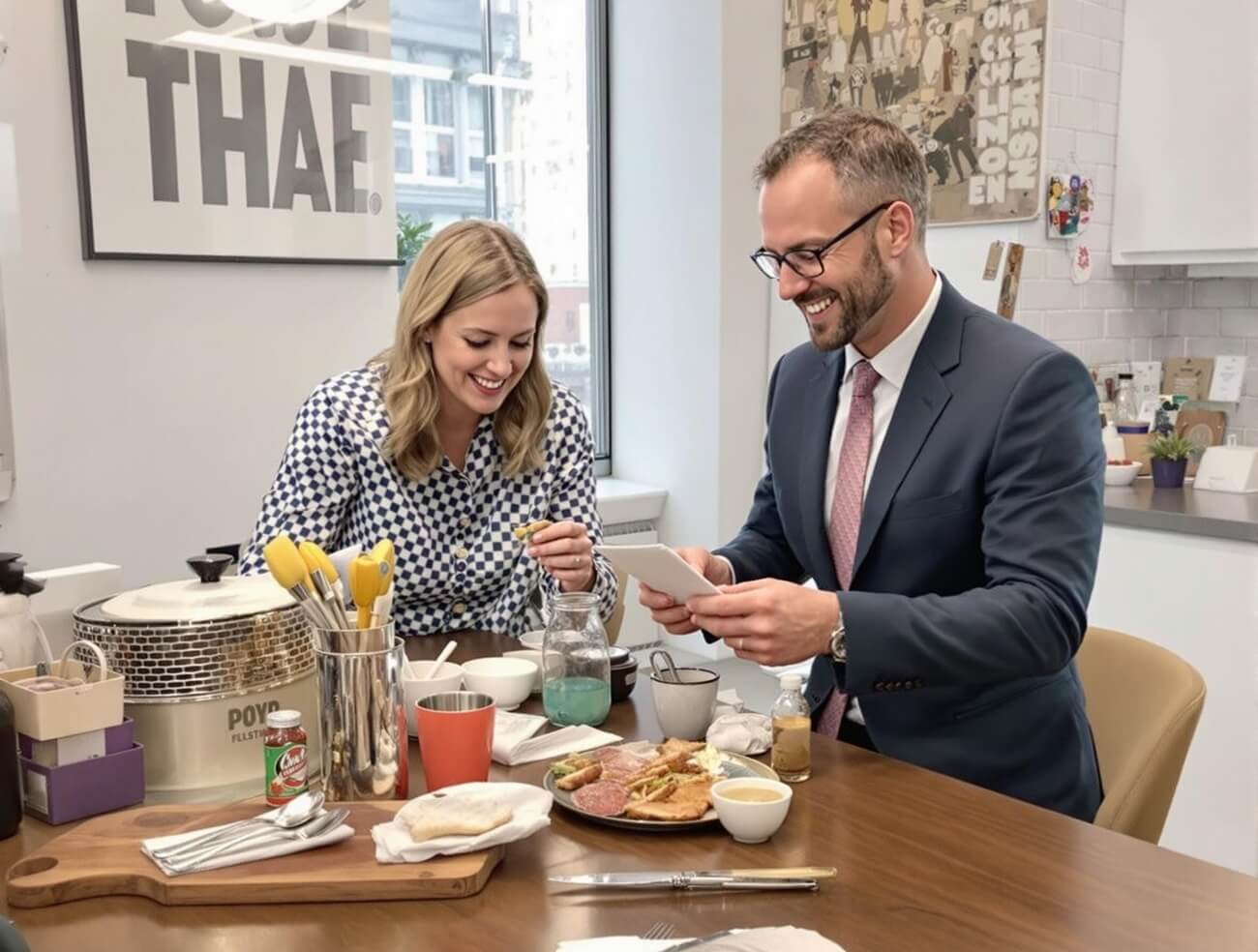Badania rynku testów reakcji smakowej

W eksploracji kulinarnej smak jest kluczem do odblokowania satysfakcji konsumenta i sukcesu rynkowego… Ale w jaki sposób firmy mogą zapewnić, że ich produkty rozpieszczają kubki smakowe i zdobywają serca? To pytanie leży u podstaw badania rynku za pomocą testu reakcji smakowej, potężnego narzędzia, które ujawnia doświadczenia sensoryczne napędzające preferencje konsumentów.
Czym jest badanie rynku testów reakcji smakowej?
Badania rynku testów reakcji smakowej oceniają i analizują reakcje konsumentów na produkty spożywcze i napoje na podstawie percepcji smaku. W przeciwieństwie do tradycyjnych metod badań rynku, które opierają się na ankietach lub grupach fokusowych, testy reakcji smakowej obejmują bezpośrednią ocenę sensoryczną, umożliwiając badaczom pomiar natychmiastowych reakcji konsumentów na różne smaki, tekstury i aromaty.
Podczas testu reakcji smakowej uczestnikom przedstawiane są próbki produktów spożywczych lub napojów i proszeni o podanie informacji zwrotnych na temat takich czynników, jak intensywność smaku, profil smakowy, wrażenie w ustach i ogólne upodobanie. Oceny te mogą być przeprowadzane w kontrolowanych warunkach laboratoryjnych lub w rzeczywistych warunkach, co daje badaczom cenne informacje na temat preferencji konsumentów, preferencji sensorycznych i akceptacji produktu.
Dlaczego firmy potrzebują badań rynku w zakresie testów reakcji na smak?

Dzięki zrozumieniu preferencji smakowych i percepcji sensorycznej konsumentów firmy mogą tworzyć produkty idealnie dostosowane do popytu rynkowego. Testy reakcji smakowej dostarczają precyzyjnych informacji na temat profili smakowych, preferencji tekstury i ogólnego upodobania, umożliwiając firmom dopracowanie formuł produktów i tworzenie ofert, które odpowiadają podniebieniom konsumentów.
Ponadto badania rynku testów reakcji smakowych pozwalają firmom identyfikować unikalne profile smakowe, innowacyjne połączenia składników i doświadczenia sensoryczne, które wyróżniają ich produkty. Dostarczając doskonałe doświadczenia smakowe, firmy mogą przyciągnąć uwagę konsumentów, ich lojalność i udział w rynku.
Ponadto badania rynku testujące reakcje smakowe umożliwiają firmom opracowywanie produktów, które stale spełniają lub przekraczają oczekiwania konsumentów, wzmacniając reputację marki i wspierając pozytywne rekomendacje z ust do ust. Jednak te badania rynku oferują firmom wiele korzyści, dostarczając praktycznych spostrzeżeń i napędzając strategiczne wyniki, w tym:
- Dokładne informacje o konsumentach: Badania rynku testów reakcji smakowych dostarczają przedsiębiorstwom dokładnych i obiektywnych informacji na temat preferencji smakowych i percepcji sensorycznej konsumentów.
- Zoptymalizowane formuły produktów: Dzięki danym z testów reakcji smakowej firmy mogą optymalizować składy produktów, aby spełnić preferencje konsumentów i zapotrzebowanie rynku.
- Wczesne wykrywanie trendów rynkowych: Badania rynku pozwalają firmom identyfikować pojawiające się trendy smakowe i preferencje smakowe zanim staną się one powszechne.
- Ekonomiczny rozwój produktu: Przeprowadzenie testów reakcji smakowej na wczesnym etapie rozwoju produktu może pomóc firmom uniknąć kosztownych błędów i późniejszych iteracji.
- Udoskonalone strategie marketingowe i brandingowe: Produkty, które niezmiennie dostarczają wyjątkowych doznań smakowych, mogą być skutecznym narzędziem marketingowym, budującym lojalność wobec marki i jej promocję.
Oczekiwane wyniki badań rynku testów reakcji smakowej SIS

SIS International Research oferuje kompleksowe usługi badań rynku testów reakcji smakowych, aby zapewnić klientom praktyczne spostrzeżenia i napędzać strategiczne wyniki. Oto niektóre oczekiwane rezultaty współpracy z SIS:
- Szczegółowa analiza sensoryczna: SIS conducts detailed sensory analysis to provide clients with a deep understanding of taste preferences, flavor profiles, and sensory perceptions among target consumers.
- Opinie i spostrzeżenia konsumentów: SIS zbiera bezpośrednie opinie od konsumentów poprzez testy reakcji na smak, zapewniając klientom cenne informacje na temat preferencji konsumentów, akceptacji produktu i obszarów do poprawy. SIS pomaga klientom identyfikować mocne i słabe strony oraz możliwości udoskonalenia, kierując podejmowaniem strategicznych decyzji i działaniami na rzecz rozwoju produktu.
- Analiza porównawcza konkurencji: SIS conducts competitive benchmarking as part of taste response test market research, allowing clients to benchmark their products against competitors and identify areas for differentiation.
- Rekomendacje strategiczne: SIS dostarcza strategiczne rekomendacje oparte na danych i analizie sensorycznej, umożliwiając klientom podejmowanie świadomych decyzji i napędzanie wzrostu biznesu. Od rozwoju produktu i innowacji po strategie marketingowe i brandingowe, SIS dostarcza wykonalnych rekomendacji, aby pomóc klientom osiągnąć ich cele biznesowe i odnieść sukces na dzisiejszym konkurencyjnym rynku.
Technologie i narzędzia wykorzystywane w tym badaniu rynku
W nowoczesnym krajobrazie badań rynku testów reakcji na smak, zaawansowane technologie i innowacyjne narzędzia są kluczowe w ulepszaniu gromadzenia, analizy i interpretacji danych. Oto niektóre technologie i narzędzia wykorzystywane w badaniach rynku testów reakcji na smak:
- Oprogramowanie do oceny sensorycznej: Specjalistyczne platformy oprogramowania do oceny sensorycznej usprawniają zbieranie i analizę danych podczas testów reakcji smakowych. Te rozwiązania programowe pozwalają badaczom projektować eksperymenty, rejestrować oceny sensoryczne i skutecznie analizować wyniki. Przykłady obejmują Compusense, FIZZ Software i EyeQuestion.
- Elektroniczne urządzenia do badania języka i nosa: Elektroniczne urządzenia do języka i nosa naśladują ludzki smak i wrażenia węchowe, umożliwiając badaczom obiektywną ocenę profili smakowych, związków aromatycznych i ogólnych odczuć smakowych. Urządzenia te wykorzystują zaawansowane czujniki i techniki analityczne do kwantyfikacji atrybutów smaku i dostarczają cennych informacji na temat jakości produktu i preferencji konsumentów.
- Rzeczywistość wirtualna (VR) i rzeczywistość rozszerzona (AR): Technologie VR i AR umożliwiają badaczom tworzenie immersyjnych doświadczeń sensorycznych dla uczestników podczas testów reakcji smakowych. Poprzez symulację realistycznych środowisk i scenariuszy, VR i AR zwiększają zaangażowanie konsumentów i dostarczają badaczom cennych spostrzeżeń na temat reakcji konsumentów na produkty spożywcze i napoje w wirtualnych warunkach.
- Czujniki biometryczne: Czujniki biometryczne, takie jak elektroencefalografia (EEG), reakcja galwaniczna skóry (GSR) i monitory tętna, mierzą reakcje fizjologiczne na bodźce smakowe, dostarczając badaczom dodatkowych punktów danych wykraczających poza subiektywne oceny. Czujniki te oferują wgląd w pobudzenie emocjonalne konsumentów, przetwarzanie poznawcze i reakcje fizjologiczne na bodźce smakowe, wzbogacając zrozumienie percepcji smaku i preferencji.
Możliwości na rynku testów reakcji smakowej

Rynek testów reakcji smakowych oferuje wiele możliwości dla firm, które chcą wprowadzać innowacje, wyróżniać się i odnosić sukcesy w branży spożywczej i napojów. Oto kilka kluczowych możliwości:
- Innowacja produktowa: Testy reakcji smakowej dostarczają przedsiębiorstwom informacji na temat pojawiających się trendów smakowych, preferencji smakowych i percepcji sensorycznych, umożliwiając im tworzenie innowacyjnych produktów, które znajdą uznanie u konsumentów.
- Ekspansja rynkowa: Testy reakcji na smak mogą pomóc przedsiębiorstwom identyfikować możliwości ekspansji i dywersyfikacji rynku poprzez eksplorację nowych preferencji smakowych i segmentów konsumentów.
- Różnicowanie marki: Produkty zapewniające wyjątkowe doznania smakowe mogą stać się silnym wyróżnikiem marki, odróżniając ją od konkurencji i budując lojalność wobec marki.
- Zaangażowanie konsumenta: Testy reakcji na smak pozwalają firmom na bezpośrednią interakcję z konsumentami, zbieranie opinii oraz wzmacnianie poczucia zaangażowania i odpowiedzialności w proces rozwoju produktu.
W jaki sposób badania rynku testów reakcji smakowej firmy SIS International pomagają firmom
SIS Międzynarodowy oferuje specjalistyczne usługi badań rynku testów reakcji smakowych, aby zapewnić firmom praktyczne spostrzeżenia i napędzać strategiczne wyniki w branży spożywczej i napojów. Oto, w jaki sposób wiedza specjalistyczna SIS może przynieść korzyści firmom:
- Indywidualne podejście badawcze: SIS stosuje dostosowane podejście badawcze dostosowane do unikalnych potrzeb i celów każdego klienta. SIS projektuje testy reakcji smakowej, które dostarczają ukierunkowanych spostrzeżeń i praktycznych rekomendacji, zapewniając maksymalną wartość i wpływ dla firm wprowadzających nowe produkty, optymalizujących istniejące formuły i wchodzących na nowe rynki.
- Zaawansowana analiza sensoryczna: SIS conducts advanced sensory analysis to provide clients with in-depth insights into taste preferences, flavor profiles, and sensory perceptions among target consumers.
- Globalny zasięg i wiedza specjalistyczna: With a worldwide network of experienced researchers and sensory experts, SIS offers businesses access to insights from diverse markets and regions worldwide.
- Długoterminowe partnerstwo: Nasi eksperci pielęgnują długoterminowe partnerstwa z klientami, pełniąc rolę zaufanych doradców i strategicznych partnerów w ich drodze do sukcesu. Oferując stałe wsparcie, konsultacje i współpracę, SIS zapewnia przedsiębiorstwom dostęp do aktualnych informacji i wskazówek, które pomogą im stawiać czoła wyzwaniom, wykorzystywać szanse i napędzać innowacje w dynamicznym i konkurencyjnym otoczeniu branży spożywczej i napojów.
Lokalizacja naszego obiektu w Nowym Jorku
11 E 22nd Street, piętro 2, Nowy Jork, NY 10010 T: +1(212) 505-6805
O firmie SIS International
SIS Międzynarodowy oferuje badania ilościowe, jakościowe i strategiczne. Dostarczamy dane, narzędzia, strategie, raporty i spostrzeżenia do podejmowania decyzji. Prowadzimy również wywiady, ankiety, grupy fokusowe i inne metody i podejścia do badań rynku. Skontaktuj się z nami dla Twojego kolejnego projektu badania rynku.


